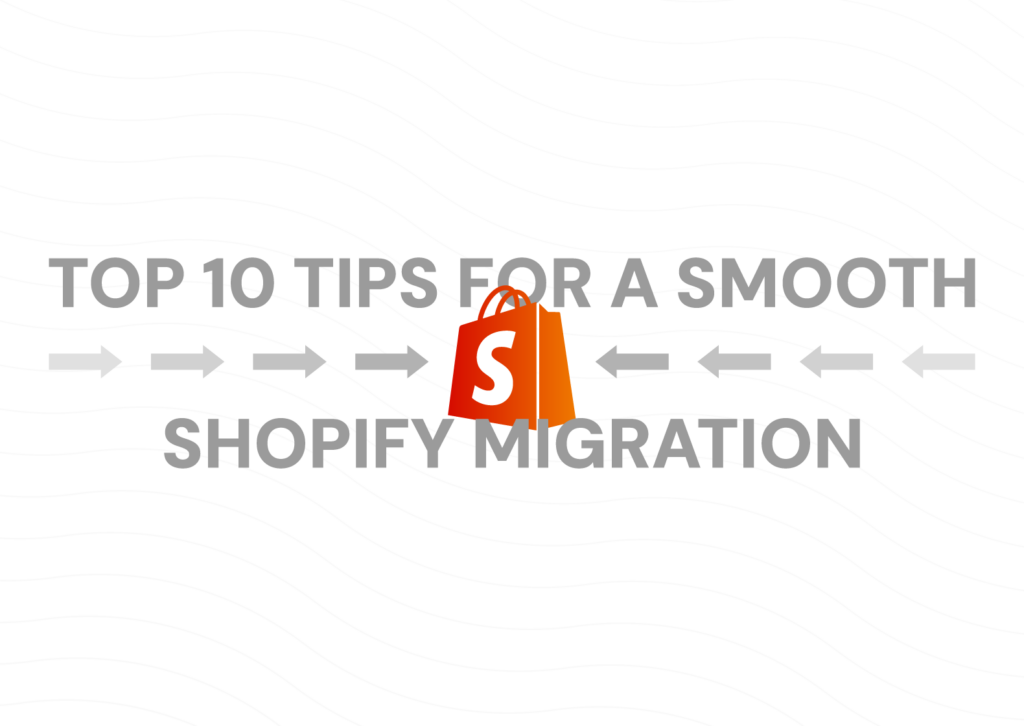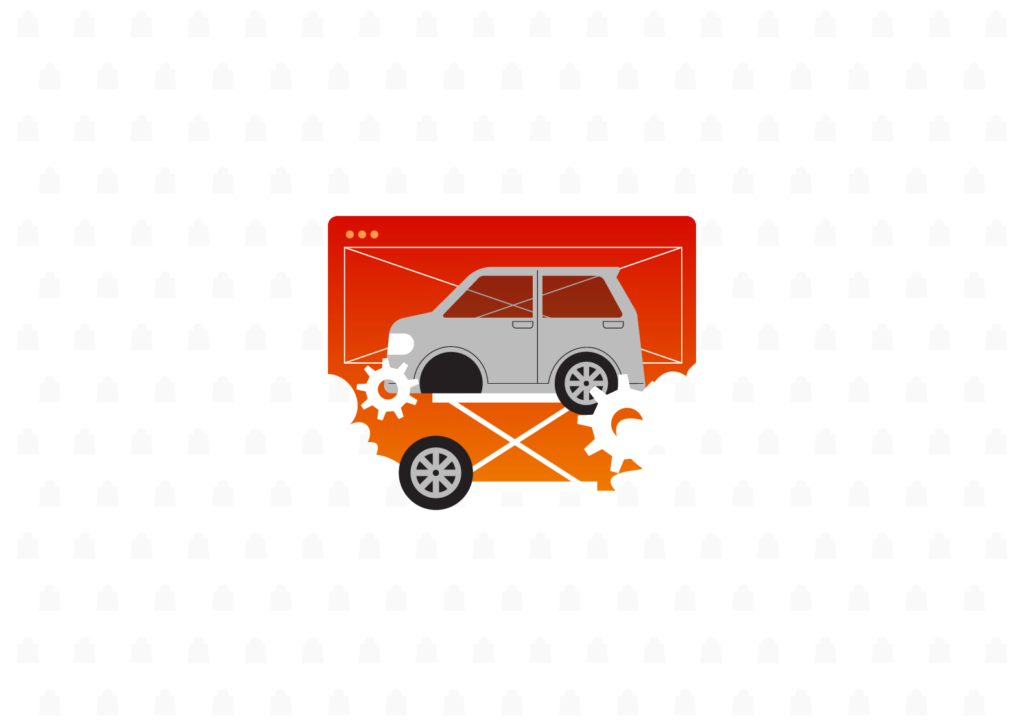Migrating to a new eCommerce platform can be scary. When dealing with such a stressful event, you don’t want to have any more stress. As Shopify migration experts, Fyresite is here to offer our top ten tips for a smooth Shopify migration.
Curious about how a Shopify Migration can help you? Read our blog or watch this video where we outline why one merchant made the switch!
Tip #1: Set Clear Migration Goals
Chances are, you would not be migrating if you did not have a reason. That’s why the most helpful thing you can do for yourself is make a list of goals for your migration.
When do you want it completed? What is your total budget? What are the top three changes you’re looking for in your migration?
Tip #2: Determine Ideal Shopify Tier
When migrating to Shopify, you need to determine what Shopify tier you are migrating to. Ideally, you want a plan that offers features equal or better than the platform you are migrating from.
Overwhelmed by the options? Here’s Fyresite’s breakdown of every Shopify tier.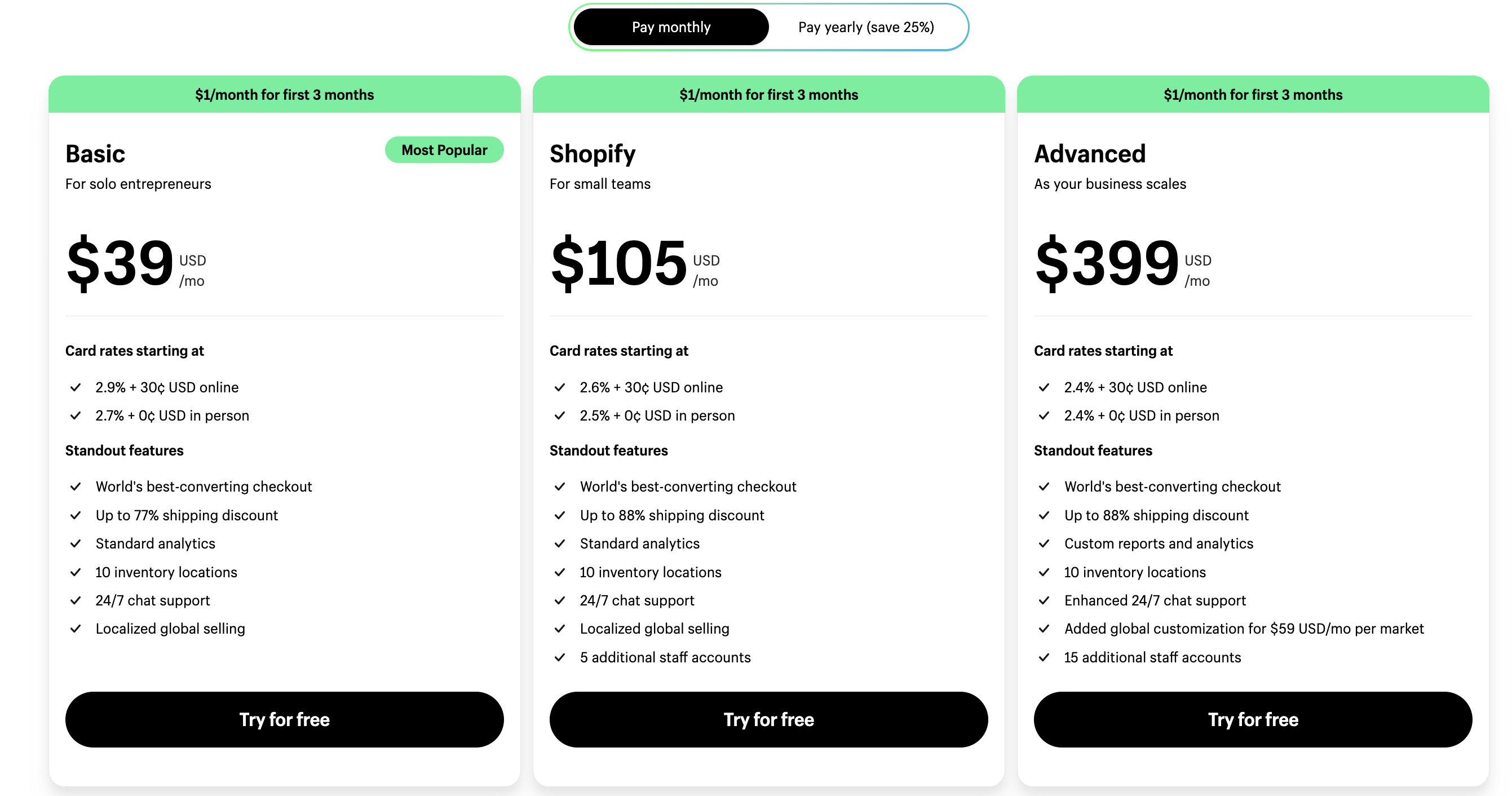
Tip #3: Determine the Right Migration Time
While it can be tempting to get your migration done as quickly as possible, don’t. Instead, take your time and review your store to see when will be the best time to migrate.
Your store will likely be inaccessible to customers for a short period of time, so you want to choose a time with low traffic, looking for times when you are not running any major sales. We also recommend migrating on a day between Monday and Thursday, so you have time to review and correct if there are any hiccups during the migration.
Tip #4: Take Inventory
Migrating from one eCommerce platform to another is a lot like moving. You need to have a list of everything that you’re taking with you, and take a look at what you want to leave behind.
In a Shopify migration, this is similar.
For a smooth migration, you need to go through your site and take inventory of what pages you have, and what pages you want to take with you. The same is done for apps, features, and even design. This audit will also help you with your SEO efforts, as you can decide what pages perform poorly and should be left in the dust.
Tip #5: Determine Migration Path
Are you going to migrate yourself? Or are you looking for an expert to do the heavy lifting for you? Regardless of which you choose, you need to make a migration path.
If you are migrating yourself, you need to ask yourself if you’ll be doing it manually or with an app. To learn more about apps that can help you migrate, read our blog about Shopify Migration for Beginners.
If you are looking for an expert (like Fyresite!) to do the heavy lifting, you need to research and reach out to get the ball rolling.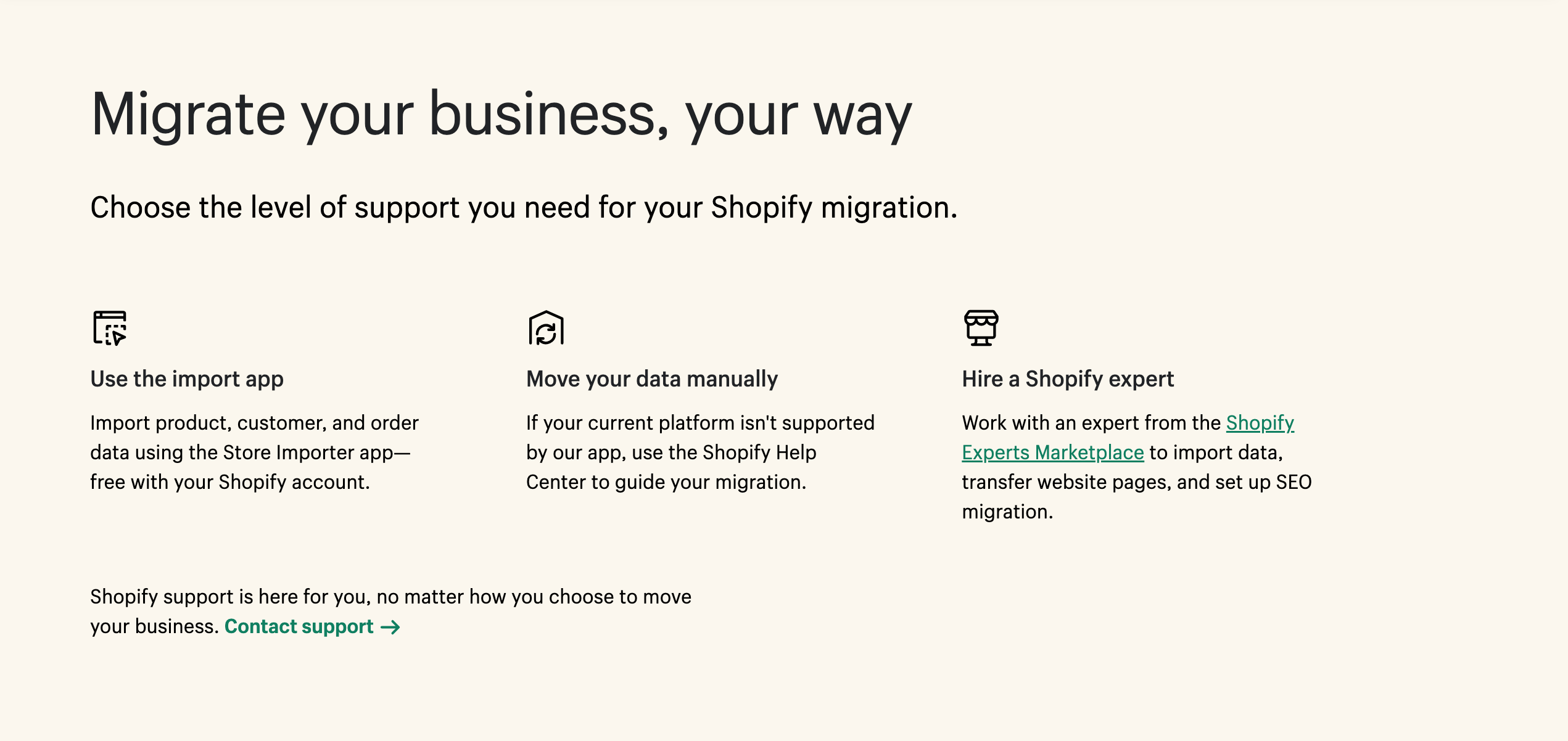
Tip #6: Preserve SEO Efforts
Unlike starting a Shopify store from scratch, migrating means that you have a site on another platform that your brand has been associated with. With the SEO efforts that you’ve put into your pre-migrated site, you want to make sure that they are preserved in your new Shopify site.
While there are a number of best practices to preserve your SEO efforts, some of the most important ones are to backup your site prior to making any changes, auditing your site for poor-performing pages, submit your sitemaps, and do our next top tip, use redirects and URL mapping.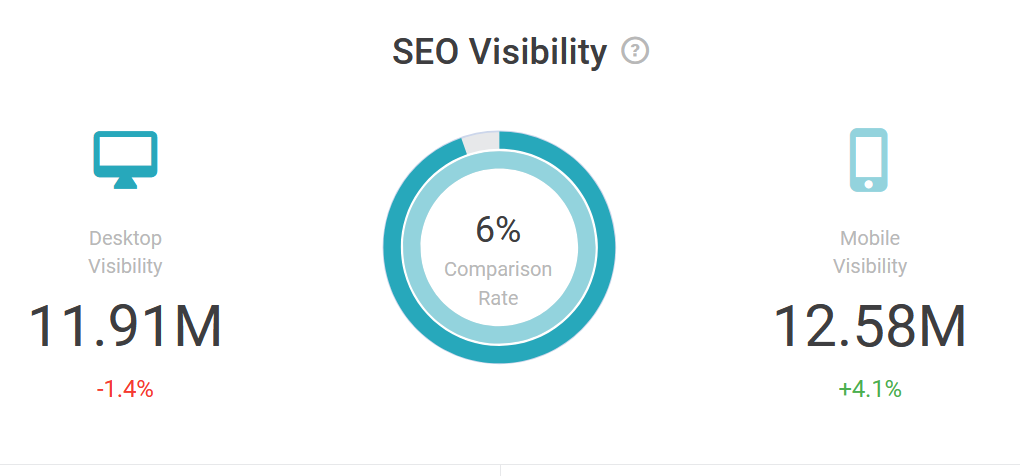
Tip #7: Use Redirects and URL Mapping
When you migrate your site, your URL is most likely not going to be the same exact URL that was on your old site. However, you still want your customers to be able to find you. That’s why you’ll need to use redirects.
Redirecting each of your old URLs to its matching new URL informs search engines that the new URL is legitimate, as well as making sure your customers end up on the correct page.
While doing this, you should also be using URL mapping. Use keyword rich descriptions in the URL to help it rank higher.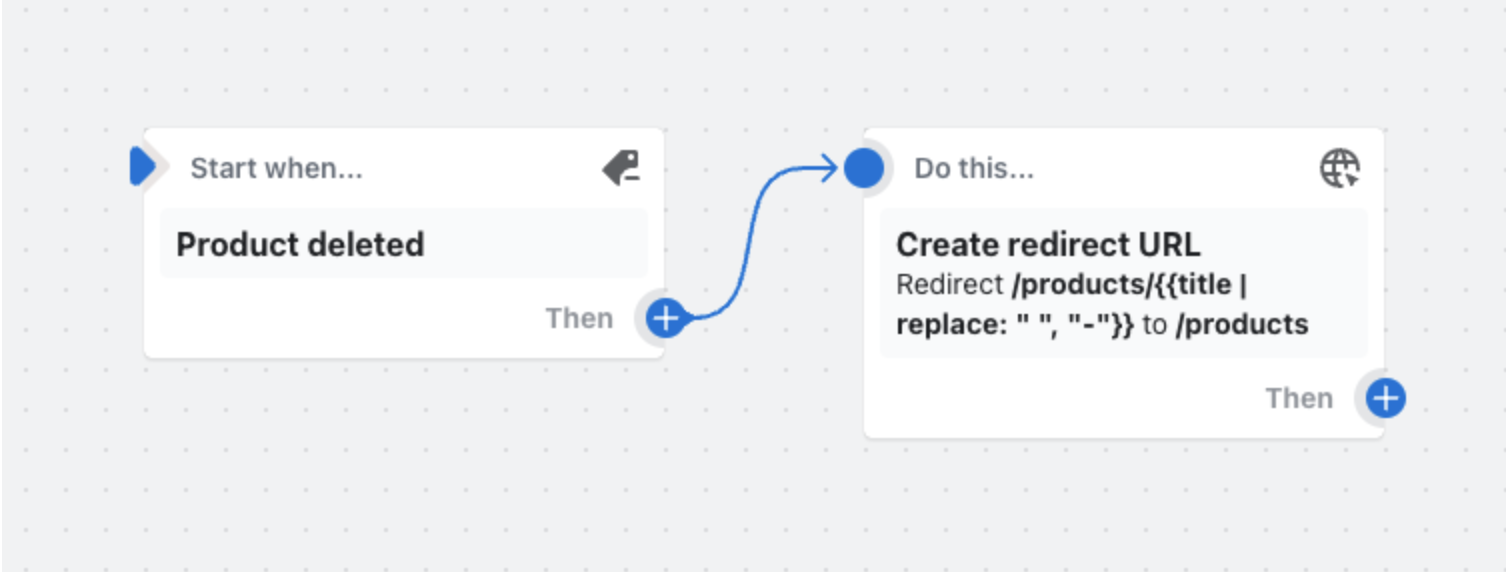
Tip #8: Test User Experience
Before you get your site ready for all your customers, you should test user experience. This way, you can catch any bugs or hiccups before customers do.
This is best done by multiple people, having them go through the site and testing every feature they find and reporting how it worked.
H2: Establish Key Performance Indicators for Migration Success
Going through the effort of migrating should never be for nothing. In order to know whether or not your migration is successful, you must have key performance indicators, or KPIs.
Some KPIs that might benefit you for after a migration are sales conversions, cart abandonment rate, average session duration, and bounce rate.
Tip #10: Announce New Site
This may surprise you, but there are actually two times during the migration process that you need to announce your new site.
The first is at the very start of the process. You need to inform your team and relevant stakeholders about your migration intent.
The second is at the end of the process. You should announce to your customers that you have a new site! If you’ve done a redesign, that should be mentioned, otherwise you should highlight the ease of your new site.
Learn More About Shopify
Want to learn more about what Shopify offers that make it such a great platform to migrate to? You may be interested in these blogs, or you can contact Fyresite to learn more about Shopify migration today!
 Taylor Simmons
Taylor Simmons 